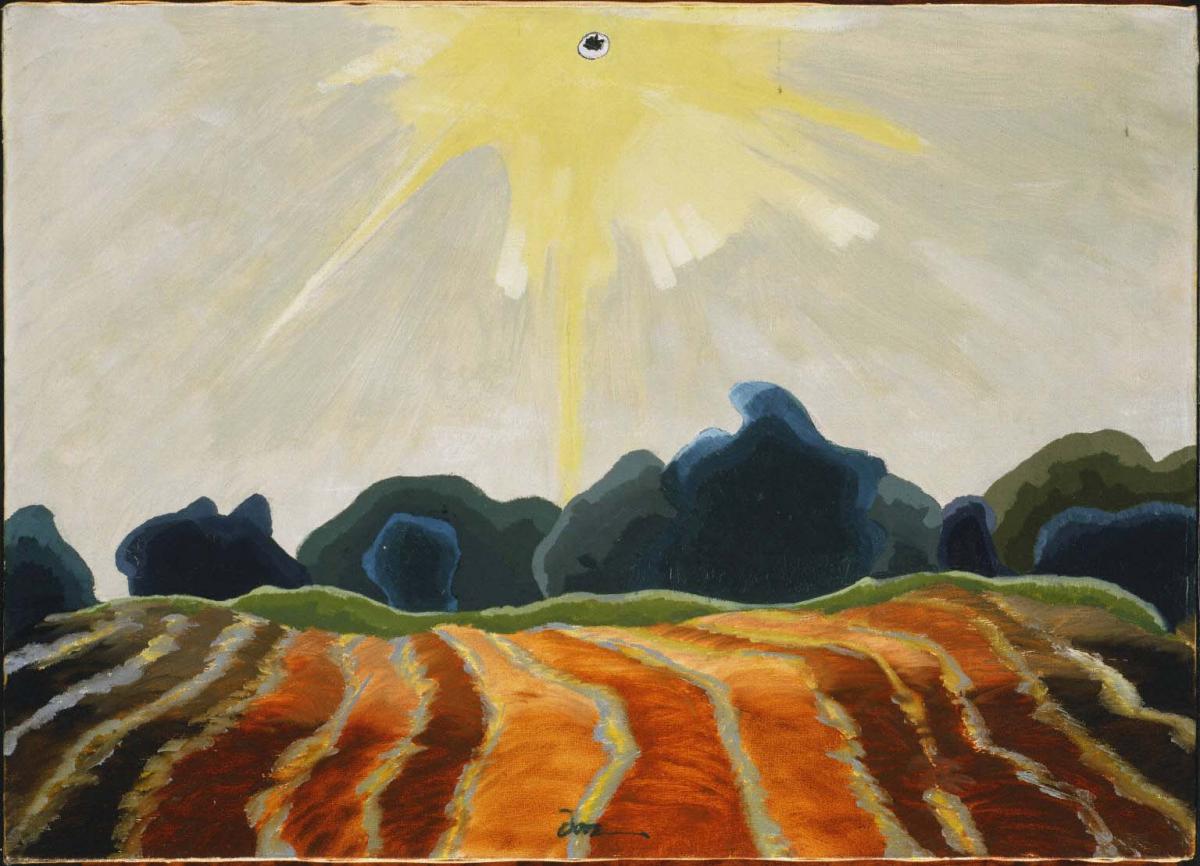Morning Sun
Arthur G. Dove ( 1935 )

Throughout his career, Arthur Dove sought to record his sensations in an abstract language of color and form. As an artist seeking to express his subjective experience, Dove saw no need for “making things look like nature.” Working at the forefront of abstraction, he rejected the longstanding tradition of art as a literal record of the outward appearance of things. In this painting, made two decades after his breakthrough abstractions of 1910, Dove captured his remembered “sensations” of a sun-filled day with organic rhythms of color, line, and form. A radiating sun spreads over a resplendent, furrowed field. Positioned low in the picture plane, the undulating field rises up dramatically before reaching the curved horizon line and lifting up toward the glowing sun. In the distant hillside, irregular, round, treelike shapes swell outward, pulsating with life. A strong, seemingly magnetic pull draws the viewer’s eye up through the sun’s rays to the black spot on its upper crust. Sensitive to the cyclical changes in his environment, Dove must have been captivated by this specific condition of light, which recurs only about every eleven years when powerful magnetic forces come into contact with the sun. Morning Sun announces the vitality ushered in by the break of dawn. Growing up on the family farm in Geneva, Dove cultivated a love of the land that is evoked in this painting. Georgia O’Keeffe once said, “Dove is the only American painter who is of the earth.” Critic Paul Rosenfeld echoed this sentiment when he spoke of the work of both Dove and O’Keeffe as embodying the “direct sensuous feeling of the earth.”